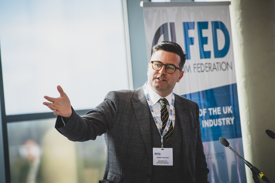


Andrew Perchard, PhD and the Honorary Research Professor at Otago Business School, University of Otago and Visiting Professor at Birkbeck, University of London. An expert in the global aluminium industry, he has authored key industry histories, advised leading aluminium bodies and served on the Scientific Council of the Institut pour l’Histoire de l’Aluminium, Paris.
In an interview for “American Aluminium Industry: The Path Forward”, Perchard explored the historical evolution of the US aluminium industry, highlighting Reynolds Metals’ rise, government-industry collaborations, wartime expansion and the strategic role of energy and trade in shaping North America’s aluminium supply chain and global influence.
AL Circle: Given your study of Reynolds’ absorption by Alcoa in 2000, do you see this consolidation as a pivotal moment in the shifting identity of the American aluminium industry — from national champion to globalised actor?
Andrew Perchard: We need to look further back than 2000 to a watershed moment in global aluminium: that of the launching of Aluminium Futures on the London Metals Exchange (LME). That profoundly changed the global aluminium industry. In the 35 years after that, most of the first movers disappeared and were either absorbed by the global mining conglomerate Rio Tinto and then of course, Alcoa bought Reynolds. Of course, Alcoa was always a global player, as well as being a national champion, but not in such a visible way that Alcan, for example, or indeed Reynolds were. Alcoa’s role as a national champion and its domestic markets, however, did have a good deal to do with its subsequent survival. Part of Reynolds' problem was that its internationalisation, as the forthcoming book will show, had a very chequered track record in internationalisation.
AL Circle: The American aluminium sector is now navigating a different kind of state-market relationship, with policies like Section 232 tariffs, the 2022 Inflation Reduction Act or the Infrastructure law. How does this compare historically to earlier eras of government intervention in aluminium markets?
Andrew Perchard: As I mentioned before, whilst there have been moments of protectionist tariffs in the history of US and global aluminium before, the scale of these tariffs are unprecedented, not least because of the unpredictability of their application. It is very hard to discern an economic logic in such tariffs, particularly as they relate to aluminium (as well as automotive and steel) where Canada is concerned; As the Aluminum Association’s CEO Charles Johnson warned, these tariffs are damaging for the US industry and consumers. Any attempt to expand domestic production will require massive (and unrealistic) amounts of likely US government investment and advantageous power rates. I am sceptical as to whether the sort of sustained private sector investment required would be forthcoming.
Given US Government commitments to generative artificial intelligence and how energy intensive that is, with the International Energy Agency projecting that AI data centres will consume more energy than Japan and US industry collectively by 2030 - and the US’s current generating capacity - I would be curious to see how the US Government envisages meeting the energy requirements of expanded domestic metals production. I suspect this, and cuts to US Government budgets, will also damage the intentions of the bipartisan Infrastructure Law in its infancy, with implications for critical materials infrastructure supply.
AL Circle: Looking across the Americas, including Canada and Latin America, how has the US’ aluminium engagement with its neighbours evolved over time? And, what lessons might be drawn as regional trade becomes increasingly contested?
Andrew Perchard: Well, as I hinted at before, this was a mixed picture and one understandably affected by the broader trade and political relations in the region. Reynolds certainly had a chequered history in Latin America, though a good deal of this stemmed from its failure in the 1950s to have a clear global strategy and invest adequately in the resources and capabilities needed to internationalise. On the whole, US aluminium producers have settled into reasonably productive working relationships in the region. Of course, a notable exception was the tensions with the nations involved in the formation of the International Bauxite Association in the 1970s and 1980s, but on the whole, it’s been more stable than unstable.
The biggest problem for the US industry in the present scenario seems to me to be a result of the tariffs and tensions with Canada, because of the US reliance on cheap Canadian power and smelters and consequently on imports of ingots.
To read deeper into the interview, click here